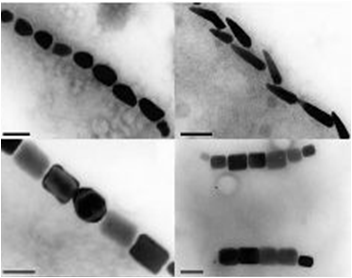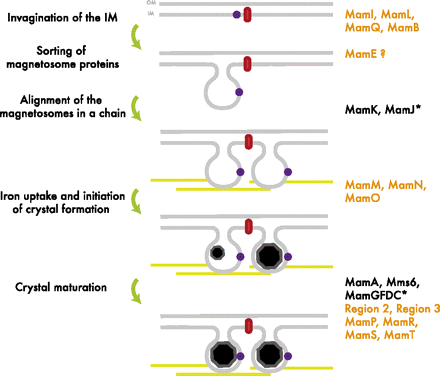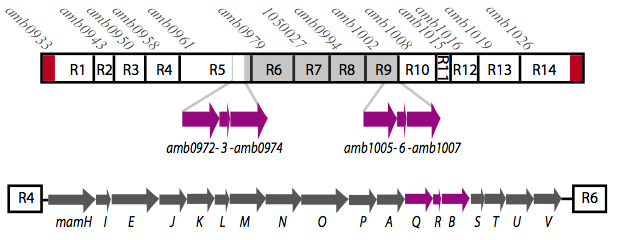Team:Washington/Magnetosomes/Background
From 2011.igem.org
Magnetotatic Bacateria and Magnetosome
Magnetotactic Bacteria are prokaryotic organisms which possess the unique ability to align themselves along a magnetic field. This form of taxis is made possible by the formation of a magnetosome organelle. Magnetosomes are small invaginations of the bacterial cell membrane that contain magnetite nanoparticles.These particles range in size between 20 and several hundred nanometers and are aligned in one or several chains along the long axis of the bacteria. These particles act together to form a magnetic dipole across the bacteria, allowing it to perceive the earth’s magnetic field. In the northern hemisphere, magnetotactic bacteria (bacteria with magnetosomes) swim north along the earth’s magnetic field lines in search of a micro-environment with specific oxygen content. It is believed that the magnetosomes help bacteria turn the search for this perfect oxygen level from a three dimensional one (in all directions) to a one dimensional one along a single path.
Closer look at Magnetosome Formation
The formation of the magnetosome organelle is a highly regulated, step-wise process requiring a cascade of essential genes. The process is generally hypothesized as four stages: i) membrane invagination, ii) acquiring minerals for magnetite formation, iii) iron-oxidation and reduction, iv) magnetite nucleation and morphology regulation. Earlier gene products must be present for later gene products to be formed as shown in the diagram below: [1]:
What did UW iGEM team do with Magnetosome?
It is thought that many of the essential genes associated with magnetosome formation are located within a well-conserved region known as the magnetosome island (MAI). The MAI consists of 14 gene clusters labeled R1-R14 (see diagram below).Our team focused on the genes of the mamAB gene cluster (R5) as they were previously shown to be essential for magnetosome membrane biogenesis in AMB-1 (diagram show below).[2].
The goal of our project was to extract all the essential genes from (R5) required for magnetosome formation and express them in E.coli. This was done in order to understand more about magnetosome formation and the magnet synthesis mechanism because many of the genes' functions are still unknown in the host species. Ultimately, we would like to show complete magnetosome formation within E.coli.
 "
"





